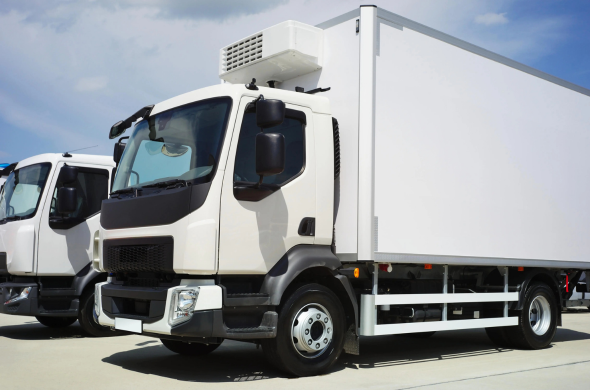Vertical farming business strategy represents a breakthrough in UAE agribusiness. Traditional agriculture confronts significant limitations: only approximately 160,000 hectares of cultivable land, a harsh desert climate, and over 85% reliance on imported food supply. In response, the vertical farming market in the UAE reached about USD 92.4 Mln in 2024 and is expected to approach USD 358.9 Mln by 2031, growing at a compound annual rate of 20.9%. These dynamics position controlled environment agriculture (CEA) at the center of the UAE’s agribusiness transformation.
Sustainable Farming: The Key to Future Agriculture
Sustainable farming underpins the vertical farming business strategy. With water scarcity a chronic challenge in the UAE, this approach delivers high productivity using minimal resources. Controlled indoor systems dramatically reduce reliance on underground aquifers and open fields, aligning with the UAE Food Security Strategy 2051’s target to locally produce 30% of fresh food consumption by 2030
Benefits of Sustainable Farming
Resource efficiency leads vertical farming to use up to 90% less water compared to conventional methods. A critical benefit in arid regions. Clean, pesticide free produce appeals to health conscious consumers, while urban placement dramatically lowers logistics emissions and spoilage risks. Yield per square metre reaches up to 350 kg annually for leafy greens and microgreens, delivering both volume and quality.
Urban Agriculture as a Solution for Food Security
Urbanization in the UAE
Rapid urban expansion in Dubai, Abu Dhabi, and Sharjah drives rising demand for fresh, locally grown produce. With imports currently exceeding 85% of local needs, food security hinges on innovative urban agriculture. Consumer preferences reflect mounting demand for ultra fresh greens, prompting a willingness to pay premium prices for quality and safety.
Role of Vertical Farming in Urban Food Supply
Vertical farms are integrating into real estate and smart city developments such as Masdar City and Dubai Silicon Oasis, delivering fresh greens, tomatoes, and herbs closer to end users. Since 2021, investments above AED 15.3 Bln reflect increased focus on agricultural integration in urban planning, achieving production densities as high as 350 kg/m²/year.
Exploring Hydroponics Systems in the UAE
Types of Hydroponics Systems
In the UAE, hydroponics dominates vertical farming frameworks. Many farms also trial aeroponics and aquaponics under CEA protocols that manage temperature, humidity, lighting, and nutrients for optimal plant development.
Success Stories of Hydroponics in UAE Vertical Farms
Pure Harvest Smart Farms near Abu Dhabi uses a hybrid model combining greenhouse and vertical hydroponics. It now spans over 16 hectares, producing leafy greens, strawberries, and numerous tomato varieties at prices up to 60% lower than imported produce.
Meanwhile, there. It is a collaborative effort by major firms to produce over one million kg of leafy greens annually for airlines and retail distribution. For example, a Food Tech Valley pilot is under construction with the capacity to produce over three Mln kg of food annually using circular, waste to value systems.
Controlled Environment Agriculture: Enhancing Crop Yields
Definition and Importance
Controlled environment agriculture refers to indoor farming under fully regulated settings, temperature, lighting, nutrient delivery, and ventilation, all precisely managed. That ensures consistent, year round output unaffected by external desert weather conditions.
Technology and Innovations in Controlled Environments
Smart agriculture sensors, automation, AI driven nutrient management systems and LED lighting make modern vertical farms resilient and efficient. The LED lighting market for vertical farming is projected to reach USD 2.3 Bln globally by 2027, supporting precision cultivation.
The Smart Agriculture Approach
Integration of Technology in Vertical Farming
Smart agriculture technologies IoT monitoring systems, machine learning forecasting, renewable energy integration (solar panels), and precision irrigation drive resource efficient operations and enhanced productivity in Dubai and Abu Dhabi projects.
Data Driven Decisions for Optimized Crop Management
Real time environmental data enables informed crop cycle adjustments, pest early detection, and yield forecasting. Farms adopting these technologies report improved resource utilization and output predictability, supporting commercial scale up.
Challenges and Opportunities for Vertical Farming in the UAE
Market Barriers and Industry Regulation
Initial capital costs remain high: establishing a commercial vertical farm may range between $2 Mln and $10 Mln, depending on scale and tech used. LED driven energy consumption demands cost control strategies, even though regional energy prices offer some relief compared with global averages. Skilled labor shortages and regulatory clarity are additional challenges, especially beyond major growth hubs.
Future Prospects for Growth and Expansion
While the UAE market total of USD 92.4 Mln in 2024 is modest, the planned expansion to USD 358.9 Mln by 2031 demonstrates strong momentum. Future growth relies on scaling decentralized models, leveraging renewable energy, AI systems, and workforce development.
Conclusion: The Future of Agribusiness in the UAE
Vertical farming business strategy offers a pragmatic, sustainable path forward for the UAE’s agribusiness sector. It reduces land usage, slashes water consumption by up to 90%, eliminates pesticides, and delivers predictable yields year-round. Government incentives, CEA innovations, and private sector partnerships form a robust foundation. Growth forecasts from USD 92.4 Mln to USD 358.9 Mln by 2031 underscore scalability potential.
Summarizing the Impact
Vertical farming fills critical gaps: limited arable land, water shortages, import dependency, and urban food access. Technologies such as hydroponics, aeroponics, and smart agriculture systems bring sustainable farming into dense city environments. Localised production mitigates supply chain fragility while supporting food security and environmental goals.
Call to Action for Stakeholders
Agribusiness investors, government policymakers, urban developers, and AgriTech innovators ought to:
- Embed vertical farms in smart city real estate and sustainability infrastructure.
- Utilize public private frameworks and incentives aligned with national food security agendas.
- Advance renewable energy integration, IoT enabled crop monitoring, AI forecasting, and workforce training.
- Scale pilot into networked systems that serve national self sufficiency goals.
Vertical farming represents the future of agribusiness in the UAE: resource efficient, technology driven, and urban focused. Strategic adoption ensures resilient food systems, economic growth, and environmental stewardship across the region.
Read our latest insights on the trending Agribusiness innovation strategies as well as ideas and perspectives that explore the trends shaping the future of business and society. Our consultancy services go hand in hand with these insights, confirming our position as industry leaders. Get in touch to find out more about our consulting services and industry expertise.



